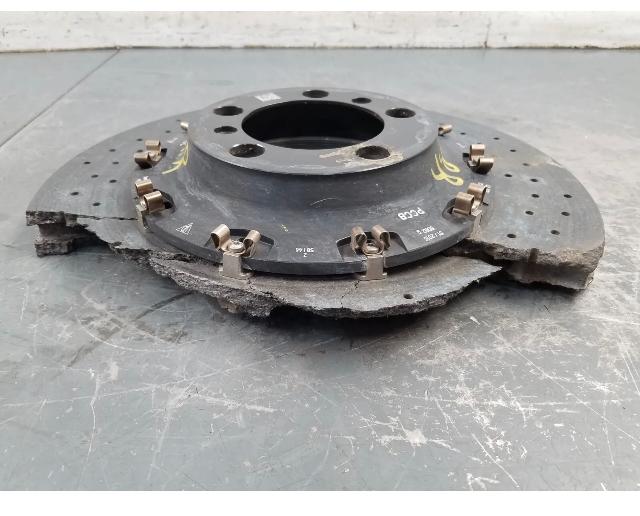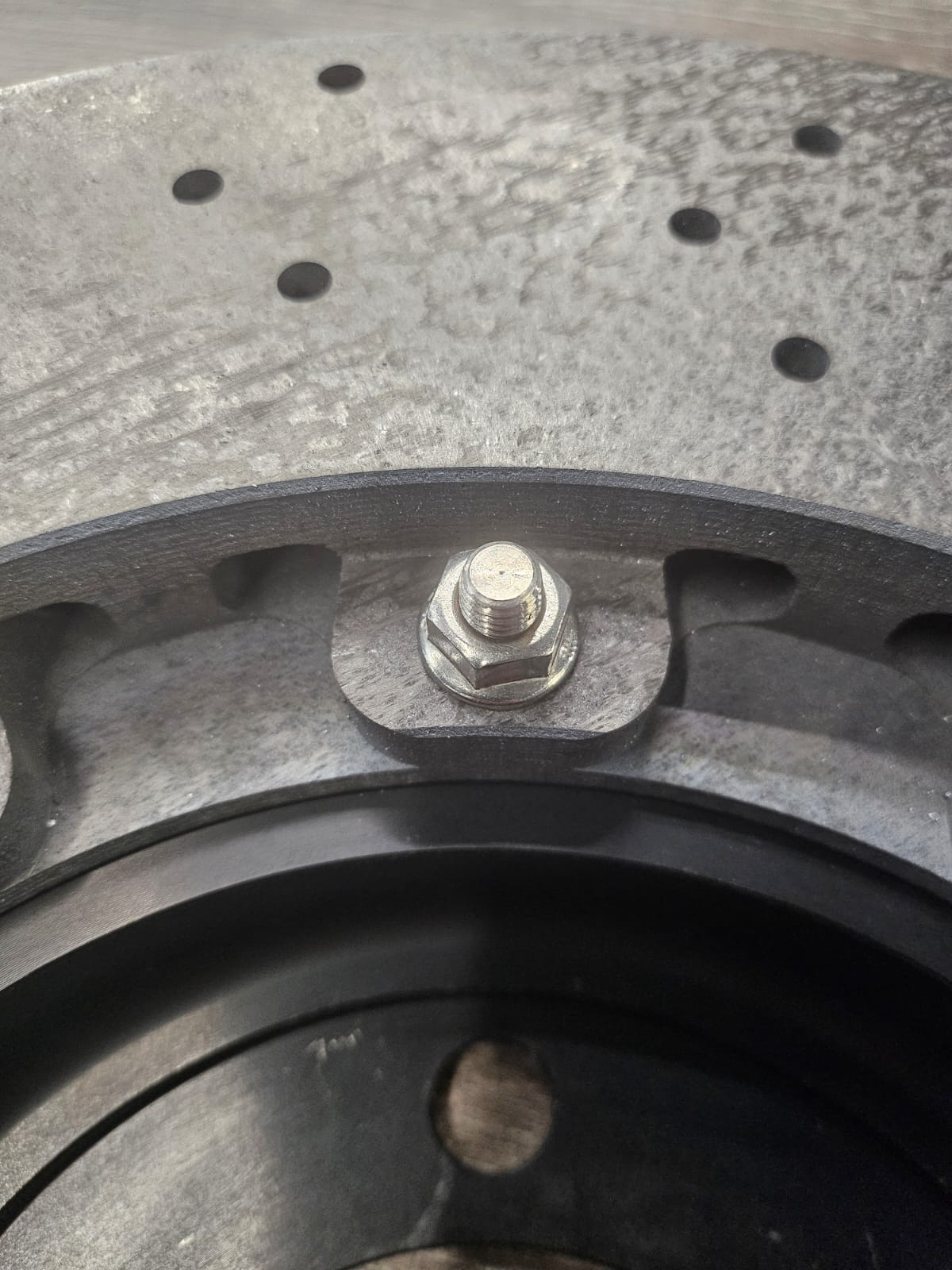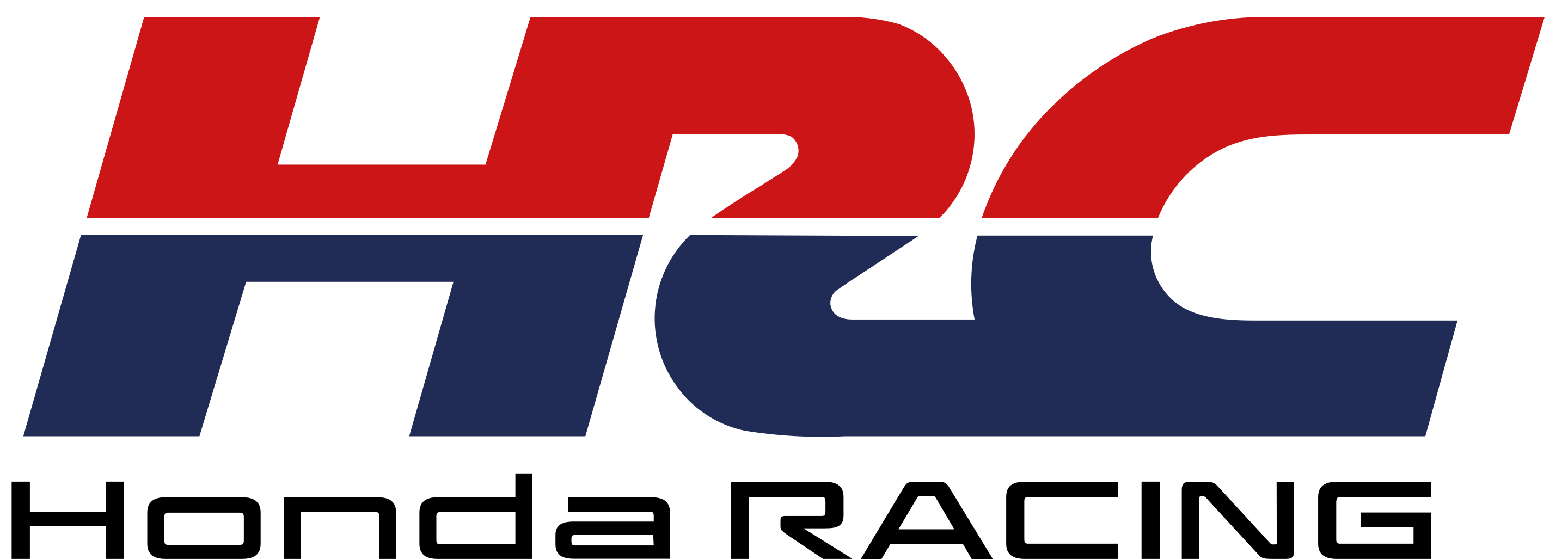We get a lot of enquiries regarding how our next-generation CCM's are different from the previous generation of CCB/CCM and how well they perform on both street and track, so we will try to cover all the relevant details in this article.
Street Use:
Although Carbon Ceramic Brakes are touted as offering the epitome of track performance (short of carbon/carbon F1 brakes), where they really shine is on a street car, even with previous generation CCB/CCM's. Why? Not only do they have a higher coefficient of friction (meaning they will stop your car faster), when paired with the correct pads (non-metallic), they will literally last you a lifetime without ever having to change your brake discs/pads again.
Unlike traditional Iron Discs/Pads which exhibit frictional wear, Carbon Ceramic Discs/Pads do not wear in the traditional sense. Instead, when brake companies refer to wear on carbon ceramic brakes, they are referring to the rate of oxidation (i.e. When oxygen reacts with carbon, the carbon vaporises). Fortunately, this process only really happens at very high temperatures, temperatures unlikely to be reached on a street car. Low temperature = no oxidation = no wear.
Oh, you also get virtually zero brake dust.
The downsides? Cost aside (being the #1 complaint), one of the most common complaints is the lack of cold or wet weather performance. This really only affects the first generation CCB's (Porsche, Audi, Bentley, Lamborghini, Bugatti, AMG, BMW-M, Aston Martin) which have an additional Silicon Carbide surface layer to protect the inner Carbon Ceramic core from debris. Although highly resilient to frictional wear, unfortunately, once this protection layer gets damaged (rocks, debris etc), it is very easy for the rest of the layer to crack/disintegrate. Left unchecked, this is a disaster waiting to happen! For a brake disc to perform as intended, the surface needs to be as smooth as glass, not broken into pieces like a cracked ceramic tile.
Whilst there are aftermarket services available to refurbish these CCB's (e.g Rebrake) by adding a new Silicon Carbide surface layer, the process/technology to do this actually weakens the Carbon Ceramic core. Carbon is what gives the disc structural integrity; the Rebrake resurfacing technology actually replaces some of the carbon with Silicon Carbide, changing the pre-determined carbon/silicon ratio from the manufacturer, leaving you with a shiny as new disc on the surface, but is weaker internally. At around US$1000 per disc, it is cost-effective in monetary terms, but at what cost in terms of safety/longevity? The jury is out on that one...
Disclaimer: We at CTE Carbon Composites hold no grudge against Rebrake and their technology. However, if you really must resurface your oem CCB, we highly recommend Redisc instead. They are the inventors of the resurfacing technology that Rebrake licensed and purchased, and have subsequently improved their technology so that they do not weaken the disc core like Rebrake do. They are, however, more expensive.
Newer technology was then developed, leading to the first generation CCM's (Ferrari, Maserati, Alfa Romeo, Corvette, Nissan, Chevrolet, Mc Laren, GM, Pagani). These discs are constructed from a highly dense, multidimensional crystalline matrix and are much more resilient to oxidation than the CCB's. Due to their higher coefficient of friction, they also work better under cold or wet weather conditions. Unfortunately, they still suffer from the same issues as CCB's when they get damaged.
The takeaway from this? If your CCB/CCM's (whether brand new or used) have surface cracks, be extra vigilant. Cracks, no matter how insignificant they may seem on the surface, allow oxygen into the disc core, and we all know now that oxygen is the enemy of Carbon Ceramic Brake discs under higher braking temperatures. When the cracks spread, and they will, they also affect the structural integrity of the disc.
Image showing what happens to an OEM Porsche PCCB (made by Brembo/SGL) after surface cracks/micro-fractures start to spread to the disc core.

Track Use:
As mentioned, these are touted as the epitome of braking performance and they are, to a certain extent. While oxidation would rarely occur under street-driving conditions, when used on the track, this is a whole different ball game. Extremely high temperatures are a common theme with track use (remember all those images of glowing brake discs?) and Carbon Ceramic brakes heat up extremely fast. High temperature = oxidation = wear. This unfortunate situation is why most non-professional drivers (i.e less disposable income) would swap out their CCB's/CCM's for Iron brakes; it is NOT because of lack of performance (this is indisputable, no matter how much sellers of Iron brakes will argue against the fact). It is because they can't afford to keep replacing their carbon ceramic brakes after they wear down.
Introducing the next-generation of CCM's:
Credit is given where credit is due, and for that, the shout out goes to Surface Transforms (ST). They changed the carbon ceramic brake industry almost 2 decades ago.
Using new cutting-edge technology (at the time), they managed to get rid of almost all of the disadvantages plaguing the previous generation CCB/CCM's. By introducing Continuous (Long) Carbon Fibre (instead of the MUCH cheaper Discontinuous (Short) Carbon Fibre used, and still used to this day, by Brembo/SGL and thus OEM) and utilising next-generation production methods, not only are their discs much more resilient to oxidation (hence can be used at high temperatures seen under track use), they are also much more resilient to damage. In addition, a bonus effect of the newer technology is an even higher coefficient of friction. Win-win.
Fast forward to now and almost all Carbon Ceramic Brake discs on the market (besides the outdated Brembo/SGL OEM stuff) are next generation, stemming from the technology that ST developed/introduced. Yes, even the bargain-basement Mainland China discs.
The differentiating factor between current next-generation discs:

Image of a Mainland China next-generation T300-grade Continuous (Long) Fibre CCM. Notice all the surface cracks/micro-fractures.

If you have any questions at all, please feel free to Contact Us.
Street Use:
Although Carbon Ceramic Brakes are touted as offering the epitome of track performance (short of carbon/carbon F1 brakes), where they really shine is on a street car, even with previous generation CCB/CCM's. Why? Not only do they have a higher coefficient of friction (meaning they will stop your car faster), when paired with the correct pads (non-metallic), they will literally last you a lifetime without ever having to change your brake discs/pads again.
Unlike traditional Iron Discs/Pads which exhibit frictional wear, Carbon Ceramic Discs/Pads do not wear in the traditional sense. Instead, when brake companies refer to wear on carbon ceramic brakes, they are referring to the rate of oxidation (i.e. When oxygen reacts with carbon, the carbon vaporises). Fortunately, this process only really happens at very high temperatures, temperatures unlikely to be reached on a street car. Low temperature = no oxidation = no wear.
Oh, you also get virtually zero brake dust.
The downsides? Cost aside (being the #1 complaint), one of the most common complaints is the lack of cold or wet weather performance. This really only affects the first generation CCB's (Porsche, Audi, Bentley, Lamborghini, Bugatti, AMG, BMW-M, Aston Martin) which have an additional Silicon Carbide surface layer to protect the inner Carbon Ceramic core from debris. Although highly resilient to frictional wear, unfortunately, once this protection layer gets damaged (rocks, debris etc), it is very easy for the rest of the layer to crack/disintegrate. Left unchecked, this is a disaster waiting to happen! For a brake disc to perform as intended, the surface needs to be as smooth as glass, not broken into pieces like a cracked ceramic tile.
Whilst there are aftermarket services available to refurbish these CCB's (e.g Rebrake) by adding a new Silicon Carbide surface layer, the process/technology to do this actually weakens the Carbon Ceramic core. Carbon is what gives the disc structural integrity; the Rebrake resurfacing technology actually replaces some of the carbon with Silicon Carbide, changing the pre-determined carbon/silicon ratio from the manufacturer, leaving you with a shiny as new disc on the surface, but is weaker internally. At around US$1000 per disc, it is cost-effective in monetary terms, but at what cost in terms of safety/longevity? The jury is out on that one...
Disclaimer: We at CTE Carbon Composites hold no grudge against Rebrake and their technology. However, if you really must resurface your oem CCB, we highly recommend Redisc instead. They are the inventors of the resurfacing technology that Rebrake licensed and purchased, and have subsequently improved their technology so that they do not weaken the disc core like Rebrake do. They are, however, more expensive.
Newer technology was then developed, leading to the first generation CCM's (Ferrari, Maserati, Alfa Romeo, Corvette, Nissan, Chevrolet, Mc Laren, GM, Pagani). These discs are constructed from a highly dense, multidimensional crystalline matrix and are much more resilient to oxidation than the CCB's. Due to their higher coefficient of friction, they also work better under cold or wet weather conditions. Unfortunately, they still suffer from the same issues as CCB's when they get damaged.
The takeaway from this? If your CCB/CCM's (whether brand new or used) have surface cracks, be extra vigilant. Cracks, no matter how insignificant they may seem on the surface, allow oxygen into the disc core, and we all know now that oxygen is the enemy of Carbon Ceramic Brake discs under higher braking temperatures. When the cracks spread, and they will, they also affect the structural integrity of the disc.
Image showing what happens to an OEM Porsche PCCB (made by Brembo/SGL) after surface cracks/micro-fractures start to spread to the disc core.

Track Use:
As mentioned, these are touted as the epitome of braking performance and they are, to a certain extent. While oxidation would rarely occur under street-driving conditions, when used on the track, this is a whole different ball game. Extremely high temperatures are a common theme with track use (remember all those images of glowing brake discs?) and Carbon Ceramic brakes heat up extremely fast. High temperature = oxidation = wear. This unfortunate situation is why most non-professional drivers (i.e less disposable income) would swap out their CCB's/CCM's for Iron brakes; it is NOT because of lack of performance (this is indisputable, no matter how much sellers of Iron brakes will argue against the fact). It is because they can't afford to keep replacing their carbon ceramic brakes after they wear down.
Introducing the next-generation of CCM's:
Credit is given where credit is due, and for that, the shout out goes to Surface Transforms (ST). They changed the carbon ceramic brake industry almost 2 decades ago.
Using new cutting-edge technology (at the time), they managed to get rid of almost all of the disadvantages plaguing the previous generation CCB/CCM's. By introducing Continuous (Long) Carbon Fibre (instead of the MUCH cheaper Discontinuous (Short) Carbon Fibre used, and still used to this day, by Brembo/SGL and thus OEM) and utilising next-generation production methods, not only are their discs much more resilient to oxidation (hence can be used at high temperatures seen under track use), they are also much more resilient to damage. In addition, a bonus effect of the newer technology is an even higher coefficient of friction. Win-win.
Fast forward to now and almost all Carbon Ceramic Brake discs on the market (besides the outdated Brembo/SGL OEM stuff) are next generation, stemming from the technology that ST developed/introduced. Yes, even the bargain-basement Mainland China discs.
The differentiating factor between current next-generation discs:
- Production Process. Whilst all manufacturers use Chemical Vapour Infiltration (CVI) and Graphitization to create the initial 3D CFRC (i.e Carbon/Carbon), and then Reactive Melt Infiltration (RMI) to deposit the liquid Silicon material into the CFRC, the differentiating factor is the technology used to achieve these production processes. Unfortunately, ST is still using the same technology today that they first pioneered 2 decades ago. This has allowed the next generation of manufacturers (such as CTE Carbon Composites) to leap-frog them in the production process, significantly lowering both lead times and production costs.
- Grade of Carbon. Whilst most manufacturers use T300-grade carbon (the most commonly used grade in the automotive industry), we at CTE Carbon Composites are unique in that we use T700-grade carbon, used almost exclusively in the high-precision commercial and Military Aerospace industries; until now that is. T700 has an oxidation rate of less than half of T300 and, when used in continuous-fibre multi-dimensional matrix form (CCM), is virtually impregnable by oxygen due to the higher density, even on the disc surfaces. Being over 40% stronger than T300 also means it is much more resilient to damage caused by rocks and debris; this is why our discs can be used with zero issues by Professional Rally teams.
- Quality Control. This is where the majority of the bargain-basement Mainland China discs fail. Even though they use the same production process, the technology used to achieve this process varies between manufacturers, as does the quality control. At CTE Carbon Composites, our proprietary technology allows us to precisely control the Siliconization process (RMI), allowing a 100% uniform material structure with zero defects, zero air pockets and zero micro-fractures. ST are the ONLY other manufacturer with the ability to achieve this.

Image of a Mainland China next-generation T300-grade Continuous (Long) Fibre CCM. Notice all the surface cracks/micro-fractures.

If you have any questions at all, please feel free to Contact Us.









